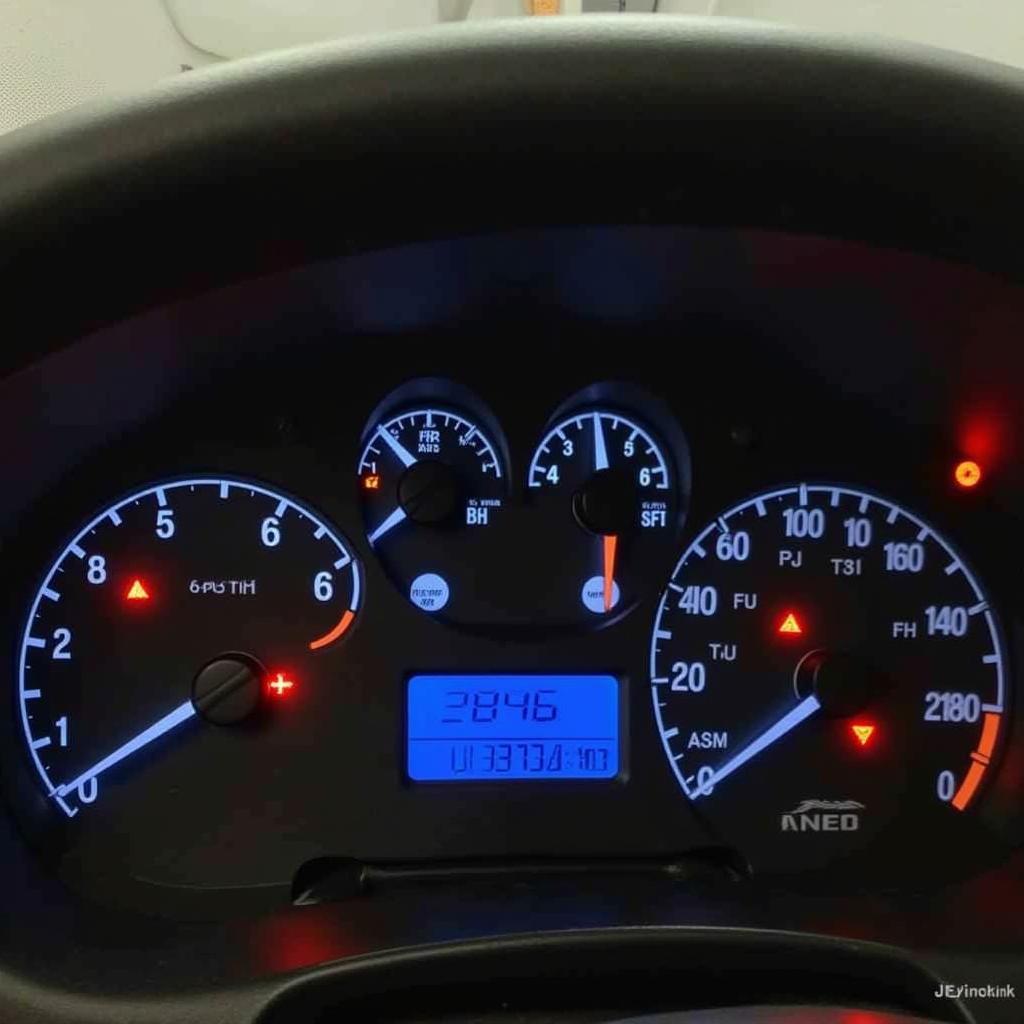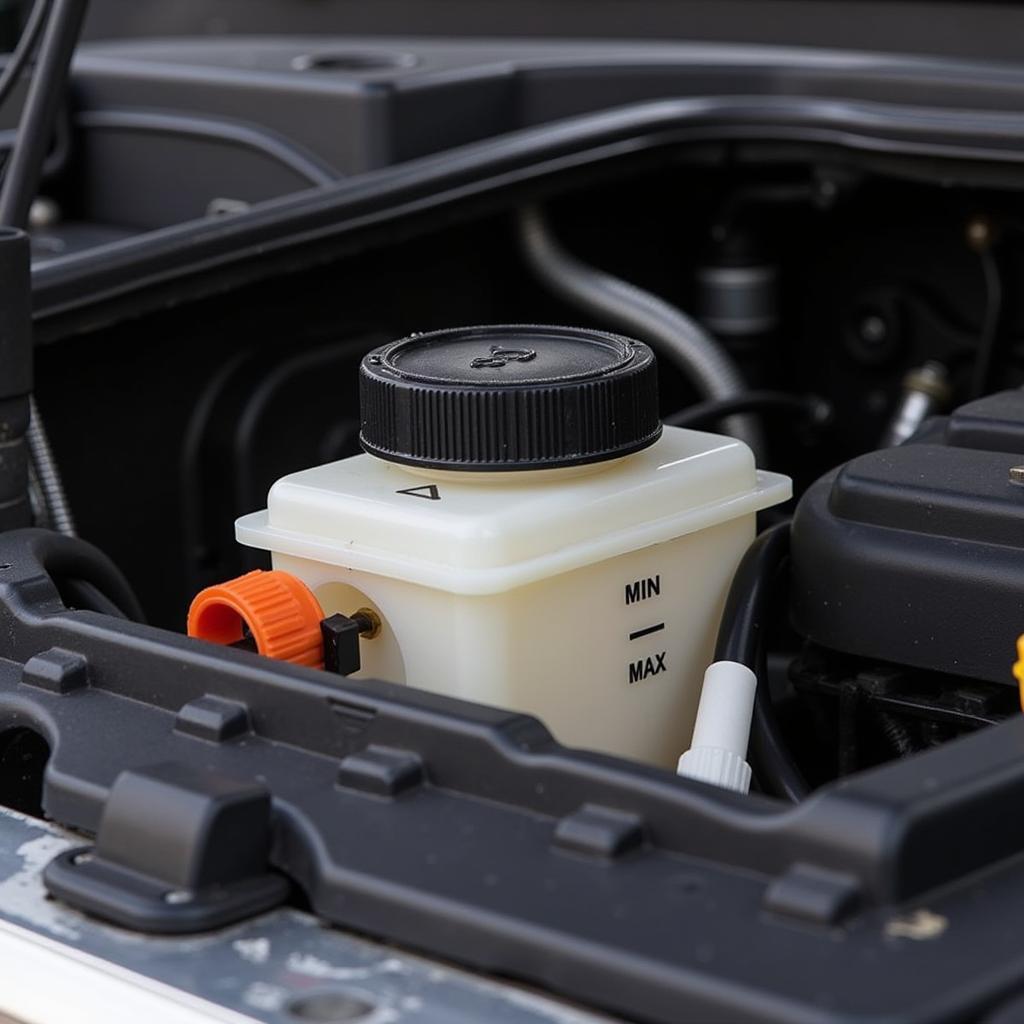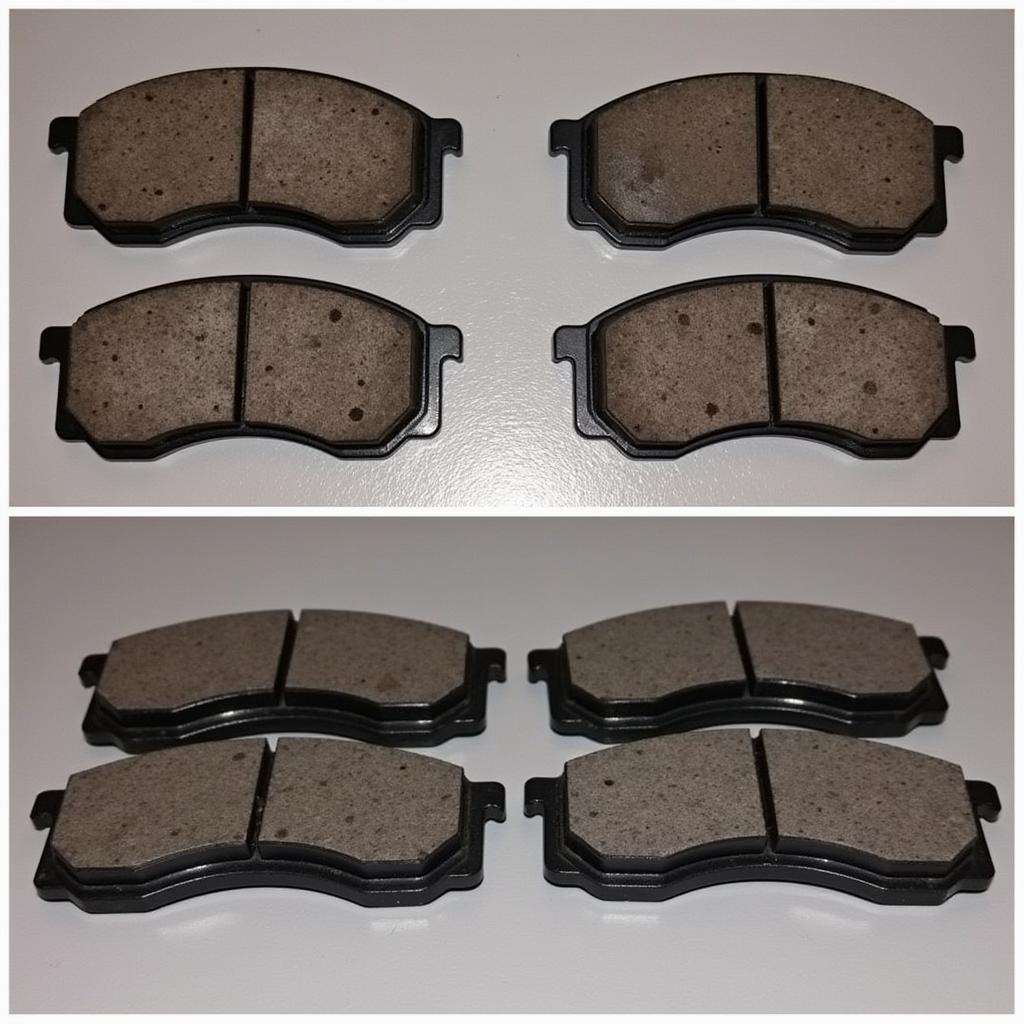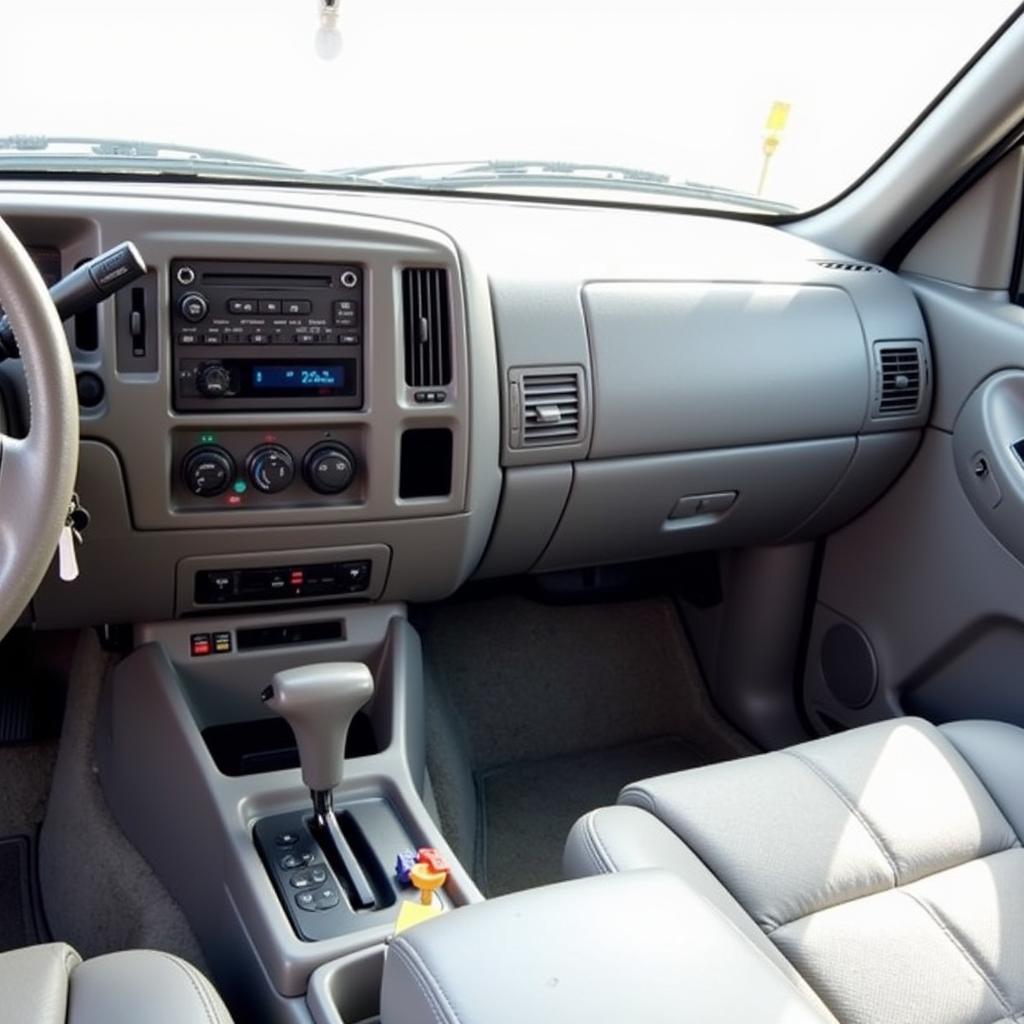The ABS and parking brake warning lights on your dashboard are designed to grab your attention, and for good reason. When illuminated simultaneously on your 2005 Ford Ranger, they indicate a potential issue within your braking system that requires attention. While a cause for concern, these warning lights don’t necessarily spell disaster. This comprehensive guide will delve into the common culprits behind these illuminated warnings, empowering you to troubleshoot the issue effectively.
 Dashboard of a 2005 Ford Ranger with illuminated ABS and parking brake warning lights
Dashboard of a 2005 Ford Ranger with illuminated ABS and parking brake warning lights
Understanding the Warning Lights
Before diving into troubleshooting, let’s clarify what each warning light signifies:
-
ABS (Anti-lock Braking System) Light: This light typically illuminates as “ABS” or features a circle with the letters “ABS” encased. Its illumination indicates a potential malfunction within the ABS system, which prevents wheel lockup during hard braking. Importantly, even with the ABS light on, your standard braking system should still function.
-
Parking Brake Light: Often represented by an exclamation mark within a circle or the letter “P” within a circle, this light serves two primary purposes. Firstly, it confirms that your parking brake is engaged. Secondly, it can signal a problem within the parking brake system itself or a low brake fluid level.
Common Causes and Troubleshooting Tips
When both the ABS and parking brake warning lights illuminate concurrently on your 2005 Ford Ranger, several potential culprits could be at play:
1. Low Brake Fluid Level
The most common and straightforward cause is low brake fluid. Brake fluid is vital for transferring force from your brake pedal to the wheels, and a low fluid level can hinder this process, potentially triggering both warning lights.
Troubleshooting:
- Check the brake fluid reservoir. Locate the reservoir under the hood, typically a translucent plastic container labeled “Brake Fluid.”
- Inspect the fluid level. Ensure it falls within the “Min” and “Max” markings on the reservoir.
- Add brake fluid if necessary. If low, carefully add the correct type of brake fluid for your Ford Ranger, ensuring not to overfill.
 Brake fluid reservoir in a Ford Ranger
Brake fluid reservoir in a Ford Ranger
2. Faulty ABS Wheel Speed Sensor
Your Ford Ranger relies on wheel speed sensors to monitor each wheel’s rotational speed, data crucial for the ABS system’s operation. A malfunctioning sensor can disrupt this data flow, prompting both the ABS and parking brake lights to activate.
Troubleshooting:
- Visually inspect the ABS sensors and wiring. Look for any obvious signs of damage, such as cuts, fraying, or disconnections, to the sensors and their wiring harnesses located behind each wheel.
- Consult a mechanic: Diagnosing a faulty sensor often requires specialized diagnostic tools. Consider seeking professional assistance for accurate identification and replacement.
3. Worn-Out Brake Pads
While it might seem unrelated, worn brake pads can indirectly trigger both warning lights. As brake pads wear thin, the brake caliper pistons extend further to compensate. This excessive extension can lead to a low brake fluid level, activating the warning lights.
Troubleshooting:
- Inspect your brake pads. If you haven’t replaced them recently, consider checking their thickness.
- Consult your owner’s manual: Refer to your owner’s manual for the recommended brake pad thickness and replacement intervals.
- Replace worn-out brake pads: If your brake pads are excessively worn, have them replaced by a qualified mechanic.
 Worn-out brake pads compared to new brake pads
Worn-out brake pads compared to new brake pads
4. Electrical Malfunctions
Electrical gremlins, such as a blown fuse or a wiring issue within the braking system, can disrupt the signal flow between components, leading to false warning light activations.
Troubleshooting:
- Check the fuse box: Consult your owner’s manual to locate the fuse box and identify the fuse associated with the ABS and parking brake systems. Inspect this fuse for any signs of a blown fuse.
- Inspect wiring and connections: Examine the wiring harnesses connected to the ABS module, parking brake sensor, and related components for any loose connections, corrosion, or damage.
When to Seek Professional Help
While this guide provides a starting point for troubleshooting, it’s crucial to remember that your braking system is critical for your safety. If you’re uncomfortable performing these checks or if the warning lights persist after attempting these solutions, don’t hesitate to seek help from a qualified mechanic specialized in Ford vehicles.
Conclusion
Experiencing illuminated ABS and parking brake warning lights on your 2005 Ford Ranger can be concerning. However, understanding the common culprits and basic troubleshooting steps can empower you to address the issue effectively. Always prioritize safety and consult a professional if you encounter any uncertainties or persistent problems.


